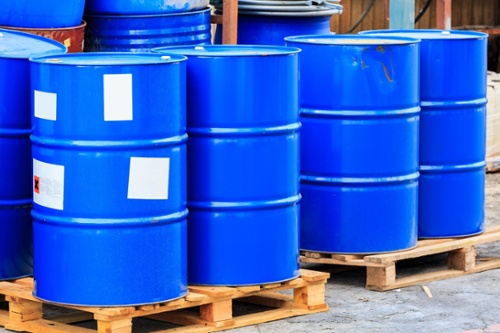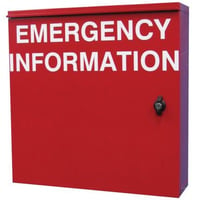As devastating as they are, bushfires are part of Australian life. With scorching temperatures, intense humidity and scarce rain, our harsh climate fuels bushfires. With the bushfire season in Australia now reaching a high of 130 days, it’s crucial that all businesses take the time to prepare an emergency plan and reduce fire risks onsite. And if your business is carrying quantities of hazardous chemicals or dangerous goods, fires will increase the risks that your chemicals already pose.
While preparation is key for bushfire season, there are further steps that you can take to reduce your risk – in particular, when it comes to your chemical stores. In this post, we’ll be looking at some measures that you can implement to create a safer environment for everyone when bushfire season starts.
Hazardous Chemical Risks and Bushfires
Fires can threaten property, people and the environment, but they can also add to your level of risk if your business is carrying any type of hazardous chemical or dangerous goods.
Chemicals can cause catastrophic explosions and harmful gas emissions if stores succumb to fire. Whether it’s a bushfire that’s encroaching on your property or a blaze caused by a workplace incident, any type of fire can increase the dangers for the staff and community in your area.

Bushfires are an increasing threat to both rural and metropolitan areas.
If a bushfire reached your chemical stores — or a blaze broke out in your business — the incident could cause a wide range of hazards with your dangerous goods.
For example, some hazards caused by bushfires may include:
- Explosive substances – detonation of explosives, resulting in widespread harm and damage
- Flammable liquids and solids – additional fuel for the blaze, with the potential for explosions
- Corrosive substances – corrosive leaks and vapour emissions causing harm to people and property
- Oxidising agents – dangerous chemical reactions
- Organic peroxides – heat may cause an explosion with some types of organic peroxides
- Toxic chemicals – toxic emissions, from pesticides and other Class 8 chemicals, could result in the evacuation of nearby communities due
Emergency incidents can occur wherever hazardous materials are being used, handled or stored. In the instance of a bushfire that threatens a workplace, your storage areas will be particularly vulnerable, due to the large volume of chemicals that are kept there.
Are your outdoor chemical stores safe?
There are also further risks that can occur when chemicals are exposed to extreme heat and fire. These may include:
- Chemical reactions
- Short- and long-term effects on human health
- Loss of property and vehicles
- Pollution of the natural environment
- Destruction of fauna and ecosystems
- Contamination of air, land and water
DID YOU KNOW Due to the complexity and seriousness of the situation, chemical incidents, such as chemical fires, are handled by a special hazmat division within your local fire service. This division has the technical expertise to assess the risks posed by a chemical fire.
Fire Safety For Chemical Stores
While there is no failsafe measure to prevent fire from ravaging a chemical store, there are some things that you can do to minimise the risk.
- Use compliant flammable liquids cabinets with thermal air barriers
- Implement compliant fire protection equipment and procedures
- Reduce chemical inventory to necessary levels
- Never leave chemicals lying around a worksite
- Keep chemicals in locked cabinets or outdoor stores
- Install fire barriers in stores and buildings
- Clear away rubbish and debris from worksites
- Don’t have vegetation growing near chemical stores
- Ensure regular chemical waste removal services
IMPORTANT: Refer to the Australian Standard that relates to your class of dangerous goods to determine the exact procedures and controls required for fire safety.
Hazards Collection
Materials and substances that can fuel a fire will only increase the scope and devastating effects of the bushfire. Flammable and combustible materials should be minimised onsite. This involves developing a stringent waste collection program, as well as daily cleaning and disposal of combustibles, such as woodpiles, paper and rags. Remember, dry materials are more likely to ignite, so make sure that there are no unnecessary combustibles at your site.
Keep your site clear from rubbish, debris and combustibles.
It’s also important to consider a tighter control on chemical inventory, particularly during bushfire season, if that is applicable for your operations. Flammable liquids and gases, such as LPG, kerosene, petrol and acetylene, are particularly dangerous in situations of fire, so keeping smaller quantities of these chemicals onsite is a recommended control measure.
IMPORTANT: A hazmat incident is one that involves a multi-agency emergency response. It involves the release or threatened release of hazardous materials — such as a major fire in a chemical store. A hazmat incident is one that poses a serious threat to the community, property and the natural environment.
What is an Emergency Plan?
When your workplace carries dangerous goods, you’ll need to consider a range of scenarios that could threaten the safety of your onsite chemicals.
Some emergencies that may occur in Australian workplaces include:
Typical emergencies can include:
- fires
- storms
- flooding
- earthquakes
- medical emergencies
- security emergencies
- power outages
- mechanical failures
- major chemical spillage
Emergency plans are crucial documents that can assist with risk reduction in the event of an emergency. However, when developing emergency plans, the responsible staff must be familiar with risk assessments, hazardous chemicals and their associated risks, as well as emergency planning itself.

Emergency plans for your organisation should be tested to ensure they're actionable and effective.
If staff tasked with the job of creating the emergency plan aren’t trained and experienced in these areas, the emergency plan may not be effective if an incident did occur.
Your emergency plan should be developed in consultation with the relevant regulatory authorities and emergency services.
REMEMBER: Safe Work Australia explains that when developing your emergency plan, you should consider the application of all relevant laws, including public health laws and state or territory disaster plans.
Emergency Planning For Bushfires
Your emergency plan should be developed using a risk assessment as the foundation for determining the requirements of the plan.
The plan must be fit for purpose and specific to your site. If the quantities or type of chemicals that you’re carrying increases, you must adjust your emergency plan. The plan must be actionable and achievable, written in clear, concise language so that both staff, contractors and emergency services can easily understand the plan.
The emergency plan will include:
- Emergency procedures, including an effective response to an emergency
- Evacuation procedures
- The notification of emergency services
- Medical treatment and assistance
- Communication between the authorised person onsite and all staff
- Testing of the plan
The level of detail in your emergency plan will be determined by the activities at your workplace, what type of dangerous goods or HAZMAT you’re carrying, and what quantities that you hold.

Your emergency planning will involve understanding the type, quantity and risks associated with your chemicals and dangerous goods.
Remember, if your work activities or chemical inventory changes, so must your emergency plan. Your plan should then be tested after each modification, as well as the initial testing when it was first created.
To ensure the plan is understood by staff, practice drills and emergency simulations should be performed. These should familiarize all staff handling and storing hazardous chemicals will the correct emergency and evacuation procedures in the event of an emergency, such as a bushfire.
IMPORTANT: Check with your local Safe Work authority in your state or territory to learn more about the obligations for your workplace in regard to emergency planning with hazardous chemicals. You should also refer to the Australian Standards to determine your fire protection and emergency management obligations.
How Should You Store Your Emergency Plan?
Your emergency plan should be stored in a waterproof box, such as a HAZMAT box. This allows emergency services to gain fast access to these essential documents in the event of a bushfire or chemical incident.
HAZMAT boxes should be located within your organisation, as close as possible to the main entry of your building. If there are multiple entrances to your site, you may wish to consider installing a HAZMAT box at each entrance.

Your HAZMAT box and emergency plans must be easily accessible during an emergency situation.
If your workplace has a security post that monitors access to your site, you should also include a HAZMAT box within this post.
In addition to your emergency plan, you should also store your Manifest of Hazardous Chemicals in your HAZMAT box. The manifest is a legal document that is required if your workplace exceeds the threshold quantities of certain hazardous chemicals and Dangerous Goods. This document allows emergency services to understand the chemical risks at your site.
REMEMBER: You can consult with your local fire department to find out further details about emergency plans for chemical incidents, as well as the preferred location of your HAZMAT box. When in doubt, always speak with your local fire station as they will be the team who is directly responding to your emergency situation.
What’s Your Hazardous Chemical Emergency Plan?
Whether you’re running a manufacturing business in Sydney or an agricultural enterprise in Far North Queensland, you’ve got to be prepared for bushfire season. HAZMAT and dangerous goods are particularly volatile when exposed to heat, smoke and flames – and can cause catastrophic damage if they explode or react during a fire emergency.
To learn more about controlling the many risks associated with hazardous chemicals and dangerous goods, click this link. Our eBook will introduce you to our 4-step risk management methodology which can easily be applied to any workplace that carries any quantity of hazardous chemicals. Grab your free copy now and create a safer working environment in your business.
Joining the team as a Dangerous Goods Storage Consultant, Melissa Hampton became Storemasta's Marketing Manager in late 2021. With extensive knowledge and experience in chemical compliance, Melissa is responsible for leading the Marketing team and helping shape their marketing strategy. In her spare time, you can find Melissa hiking, swimming and enjoying the great outdoors in beautiful north-west Tasmania.

